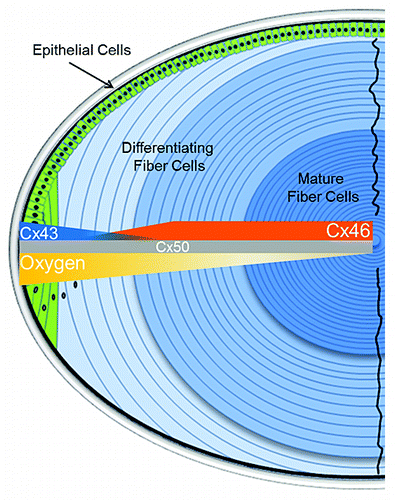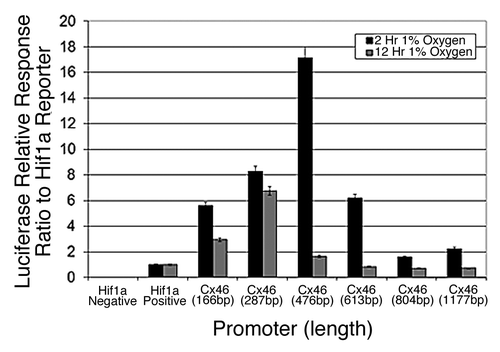Figures & data
Figure 1. Schematic model of lens connexin expression zones. Cx43 is expressed primarily in the epithelial and short differentiating fiber cells. Cx46 expression begins relatively early in lens differentiation and small amounts can be found in the short differentiating fiber cells. Cx50 expression remains relatively constant throughout lens development. Lens epithelial cells begin to elongate and migrate inward when the transition of Cx43 to Cx46 expression occurs as oxygen levels fall from 10–15 mmHg to ~3–5 mmHg within the lens.

Figure 2. The promoter of human Connexin 46 is transiently responsive to 1% oxygen in human lens cells. Various fragments 5′ to the predicted transcription start site of the human Cx46 promoter were cloned into a promoterless luciferase reporter vector and tested for responsiveness to 1% oxygen in human lens epithelial cells. The varying activity correlated with the length of the promoter indicates the presence of regulatory elements encoded within the promoter. The promoter did not respond to hypoxia in N2A cells in the same assay (unpublished data). Error bars represent standard error of the mean (n = 6).
